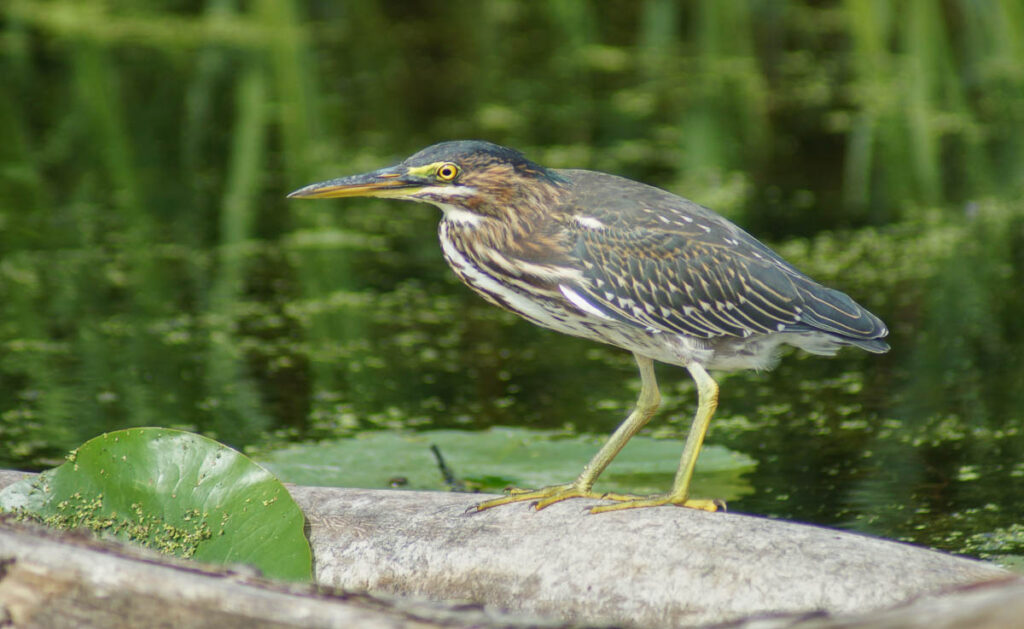The Green Heron (Butorides virescens) is a small heron of about 18 inches in length with a wingspan of 26 inches. It is well camouflaged, and like all herons, it often remains motionless, but when it does move, it makes slow deliberate movements to avoid detection by its prey. The Green Heron eats fish, frogs, and larger invertebrates found in the shallows of lakes, rivers, and marshes. Most often, it catches its prey with a lunging stab of its long neck and bill. However, it will also occasionally dive from a standing position.
Green Herons usually nest alone in a tree or shrub above water. However, they are known to form small colonies or join the colonies of other bird species. Both parents raise the young. These birds breed primarily in North America, including Mexico. Mexican birds often do not migrate. In winter, most of the American birds migrate to Mexico, Central America, northern South America, and the Caribbean.

I found this young Green Heron skulking on a log, on the Fox River in Green Lake County, Wisconsin. It noticed me and slowly tried to sneak away when I stopped my boat to take photographs. Peaking through the viewfinder it was hard to locate the bird at first, thanks to its camouflage and slow movements. When Green Herons became alarmed, as this one eventually did, they flare a small crest and make a kuk, kuk, kuk, kuk noise, at least that is how it is described in the Sibley Guide to Birds. I find Green Herons to be fascinating residents of my local lakes and marshes.
Photo taken with a Sony A65v and Sigma 150-500mm 5.6-6.3 APO HSM
